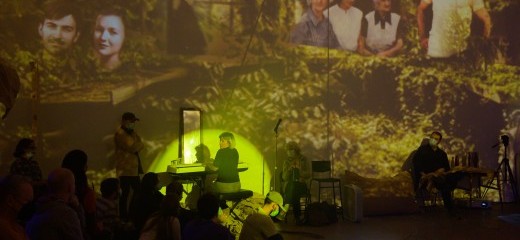
Come Back Home
by Megan Bridge
Annie Wilson is a singular artist.
Messy.
Vulnerable.
I would say fearless, but I know that’s not true, because Annie and I have been friends for a long time, and she has told me of things that she is afraid of. Annie has fear. But she is brave in the face of it.
Always the Hour is a three-hour installation/performance ticketed in the style of an art exhibition, with timed entries. But this is not a stagnant work of art you can wander through. It doesn’t loop. My ticket was for 7:30, which ultimately meant that I missed the first half of the show. My loss.
Always the Hour draws upon multiple myths, including ones from Annie’s own family. Her grandfather, Gub, flew with the 96th Bomb group in the 8th Air Force during World War II. Their motto was “always the hour” (E Sempre L’Ora). Colloquially, “E Sempre L’Ora” is taken to mean that it’s always a good time to do the right thing. In the context of the 8th Air Force, it meant that Germany could be bombed around the clock.
Gub was also an alcoholic, and Always the Hour is an homage to the dirty and essential work done by that lowly organ (once revered by the Greeks as the seat of human emotions): the human liver. The work references the Prometheus myth, and the set integrates text from Pablo Neruda’s poem Ode to the Liver.
Annie and her team have completely transformed the Icebox Project Space. There is a meticulous abundance to the material that is present. An enormous pile of dirt shapes part of the landscape of the space. A huge bag of sand is suspended from the ceiling, grains slowly trickling down to the floor, hourglass style. Brown butcher paper, covered with writing, is crumpled and draped everywhere. I learned later from Annie that the paper contained both dramaturgical texts as well as archival writing from Gub’s experience, including letters he wrote to the VA and to his cousins.
The installation is designed to provide comfort to the audience over the course of this durational performance. There are cushions all over the space and some scattered chairs. Some audience members are standing or wandering, most are seated or even lying down, taking in the performance from various positions of ease and rest. A canopy of fabric creates a smaller room within the room, a tented seating area decorated with string lights and more comfy cushions.
When I arrive, Annie and dancer Shannon Murphy are both moving and speaking. Another performer, Jaime Maseda, moves throughout the space with a hand-held mic, amplifying their voices in turn. The visual and visceral aspects of encountering the work overwhelm my senses. Eventually Annie and Shannon come together, back-to-back, their movements syncing into a repetitive unison, all whipping arms and flying hair. Supporting each other, they lean and roll off each other’s bodies and separate. During this section, a fourth performer, Copper Santiago, delivers a monologue where she plays Gub. Speaking from inside the liver, Gub proclaims “I’m like a person at last call who doesn’t realize, it’s time to GO.” As Annie explained to me later, Gub’s ghost won’t leave her either: “his DNA is a part of mine.”
Annie and Copper make their way over to an IV bag, and, kneeling on the floor, hold the tubes up to their faces. Bent over, they allow water to drip through the IV–it spills onto the floor and surrounding paper. The crying machine, as the cast calls the IV, occupies a lone point of sterility in all the messy abundance of the set, symbolizing the ways that death and the body are sanitized in our culture.
Later, Annie sits down at a small electronic keyboard. She describes her grandmother baking Scottish shortbread: a nod to her ancestral lineage and also to the war’s scarcity, because it is made with only 3 ingredients. Annie begins to sing: “Come back home…” The song starts off as her grandmother’s song to Gub, begging him to come back from the war. Inviting us to join her in the chorus, Annie asks us to think about who is the subject, and who is the object of the song we are singing. “Perhaps this isn’t a song from you, but to you,” Annie explains, all the while continuing to strike simple chords on the keyboard: “even if you are the one singing it. Perhaps there is someone whose life you have flown out of, who wants you home, even if you may never return, at least not in the way you were before. Someone who is making a place at the table for the new you.”
I started by describing Annie as a singular artist. What does that mean?
With Annie Wilson, you keep shaking your head because you don’t know how she can keep doing things that are just…so beyond what’s expected. She can vision so big, so deep, so far back, and so far forward.
In the shortbread song, Annie proposes that perhaps it is land that’s singing, “the ground that holds your people’s bones,” calling you back to it. She gets so personal, and then so meta. One moment her song references matrilineal baking heritage and I’m thinking about my own grandmother, and the shortbread I make for my family every year. Then, WHAM: the next instant, Annie’s song is asking me to contemplate the enormity of Sagittarius A, the black star that the entire Milky Way revolves around. I remember I am stardust. Come back home.
Always the Hour, Annie Wilson, Icebox Project Space, Philadelphia Dance Projects, April 4-6.
By Megan Bridge
May 23, 2023


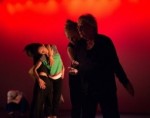

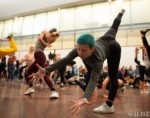
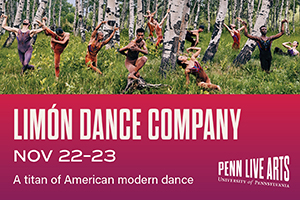
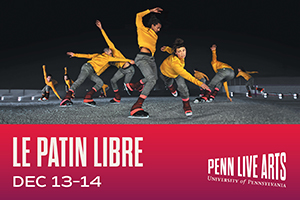
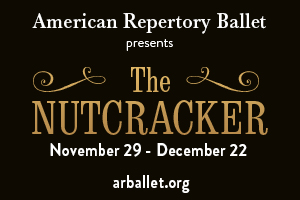
.png)


